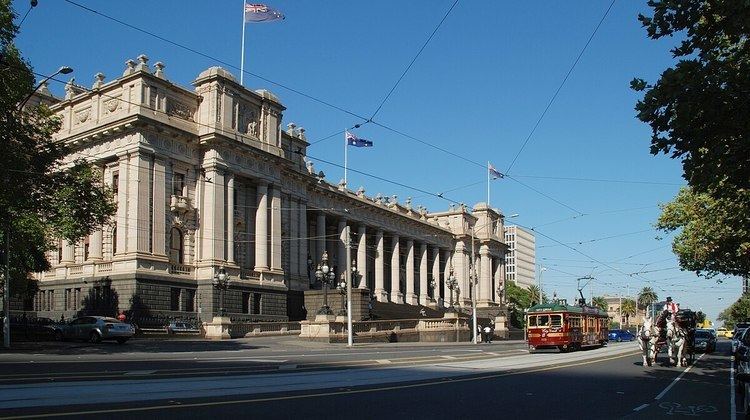Type Street Suburb(s) Melbourne CBD | Opened 1837 Major cities Melbourne | |
 | ||
Similar Parliament House - Melbourne, Melbourne City Centre, Hotel Windsor, Treasury Gardens, Princess Theatre - Melbourne | ||
703 31 spring street melbourne vic 3000
Spring Street is a major street in the central business district of Melbourne, Australia. It runs roughly north-south and is the easternmost street in the original 1837 Hoddle Grid.
Contents
- 703 31 spring street melbourne vic 3000
- Map of Spring St Melbourne VIC Australia
- Geography
- Notable Buildings
- Victorian Heritage Register
- National Trust
- Other Prominent Structures
- Parks and gardens
- Transport
- References
Map of Spring St, Melbourne VIC, Australia
Spring Street is famous as the traditional seat of the Government of Victoria, as well as being central to many of the state's major cultural institutions. The street's name is frequently used as a metonym to refer to the state's bureaucracy. Spring Street is also notable for its impressive Victorian architecture, including Melbourne Parliament House, the Old Treasury Building, the Windsor Hotel (also known as Duchess of Spring Street) and the Princess Theatre.
The street is thought to be named for Baron Thomas Spring Rice, Chancellor of the Exchequer under Lord Melbourne. An alternate theory is that the name is due to the golden wattle trees in full bloom during Richard Bourke's visit.
Geography
The street runs from Flinders Street in the south to Victoria Street and the Carlton Gardens in the north. Nicholson Street begins as an offshoot of Spring Street slightly south to its intersection with Lonsdale Street.
Notable Buildings
Spring Street has a number of architecturally notable buildings and important gardens, with many featuring on the Victorian Heritage Register and/or National Trust of Australia. These include:
Victorian Heritage Register
*Also classified by the National Trust
National Trust
Other Prominent Structures
Parks and gardens
Spring Street forms the western border of the Treasury Gardens. Gordon Reserve, a small triangle of parkland featuring heritage listed statues, is also located on Spring Street. Another small Chinese garden, known as the Tianjin Garden, is also located at the northern end of Spring Street. It is a symbol of Melbourne's close friendship with its sister city, Tianjin, China.
Transport
A number of tram routes run along Spring Street for all or part of its length, including the City Circle Tram, route 48 and route 96.
Parliament railway station, connecting to most suburban Melbourne train lines as part of the underground City Loop, lies directly beneath and parallel to Spring Street.
